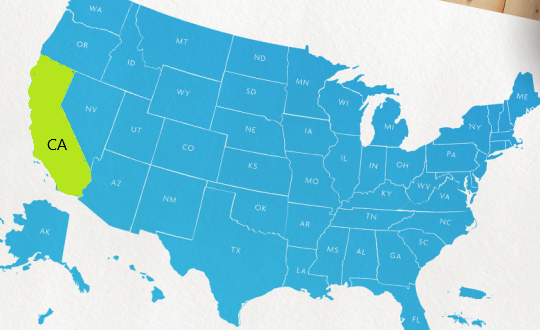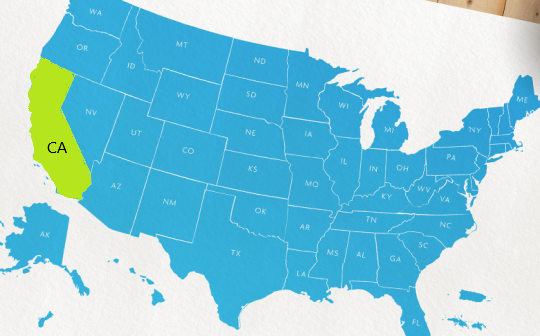CalGreen For Out of State Architects
CalGreen for Out of State Architects
Navigating CalGreen for out of state architects can be challenging.
“CalGreen” is the short form for the California Green Building Standards Code. The code is one of the twelve parts of the California Building Code. These include California Administrative Code, Building Code, Residential Code, Electrical Code, Mechanical Code, Plumbing Code, Energy Code, Historical Building Code, Fire Code, Existing Building Code, Green Building Standards Code (CALGreen), and Referenced Standards Code.
California building codes are primarily based on are the International Building Code (IBC) series of codes. The main Building Code, Mechanical Code, Electrical Code and Plumbing Codes are all IBC codes adopted with some amendments. Therefore, this portion of the design process is probably familiar to most out of state architects. Of course many of the amendments can be significant and require close review. However this, in itself, is not overly challenging to a design professional.
However, there are two code editions that can be very challenging to out of state architects. These are the California Energy Code (aka Title 24) and the California Green Building Standards Code.
The CalGreen Code is challenging for a number of reasons. First is the format itself. It contains a confusing paragraph number system that seems to repeat itself (ie: mandatory vs voluntary measures numbering).
Further it includes both Mandatory Measures and what is termed “Voluntary Measures”. What’s confusing about this is that if your jurisdiction has adopted these measures they are mandatory, not voluntary. The only way to determine if your jurisdiction has adopted the voluntary measures is to review the local municipal code amendments.
Understanding Calgreen for out of state architects is even more difficult. One of the reasons for this is that the CalGreen Code has a unique aspect that varies from every other California Building Code. The unique aspect is that the CalGreen Code allows local jurisdictions to enforce, or ignore, any and all sections of the code!
It is always ideal to use an architectural and engineering team that is based in the same state the project is located. This is because the building codes become ever more complex with each code cycle. These complexities can create expensive surprises when your design team does not have deep knowledge of the current state building code.
However, large corporations with business sites throughout the US, often prefer to use their preferred architects for all their projects, regardless of location. This requires the out of state architects to become familiar with the state an local codes where the new project will be located. This can be particularly challenging for projects in California.
This article will address the challenges with CalGreen for out of state architects.
CalGreen is Different in Every Jurisdiction
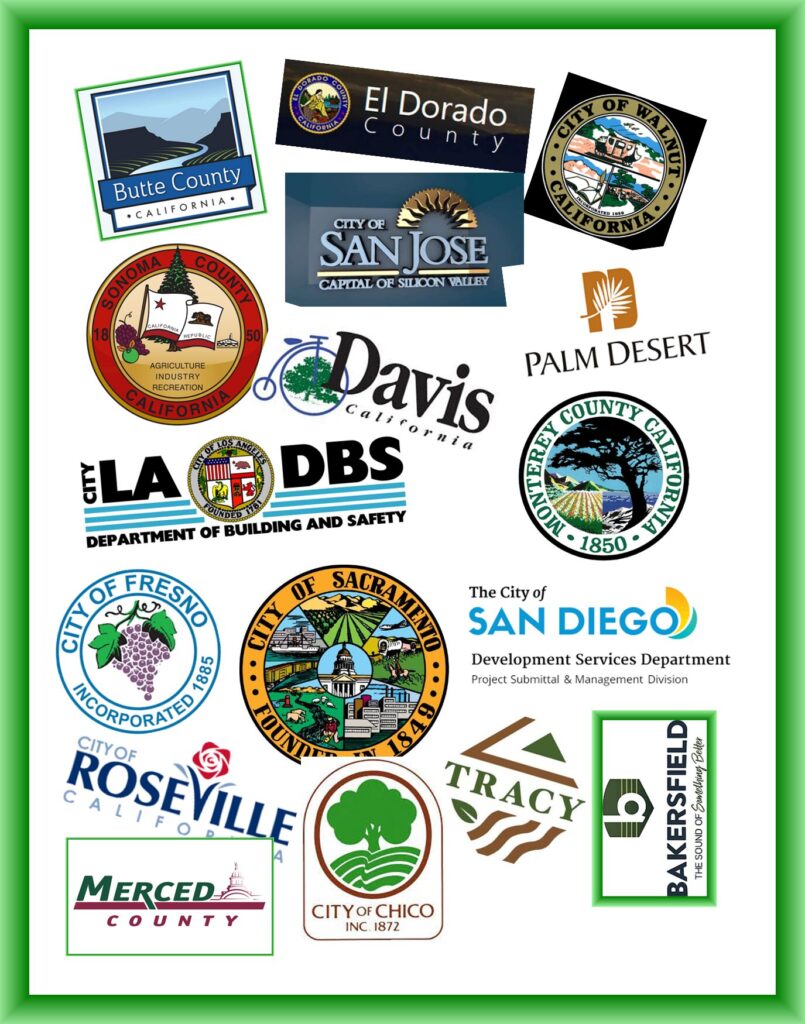
Indeed, just about every single town, city and county in the great State of California has adopted a highly modified version of the California Green Building Standards Code.
In contrast, the balance of the other state building codes, varies little within the state.
The process by which the Calgreen Code is both reviewed for permit, and enforced during construction, is the CalGreen Checklist. Initially the CalGreen Checklist was included in the Green Building Standards Code as a simplified means for reviewing the permit documents for code compliance. However it was to rapidly morphed into something else completely.
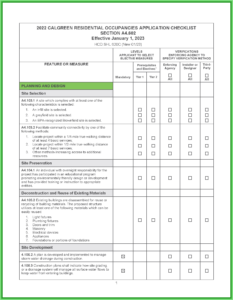
The HCD Checklist
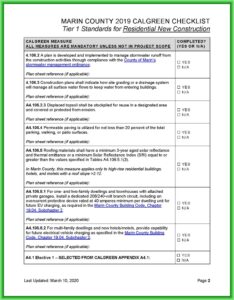
Marin County Checklist
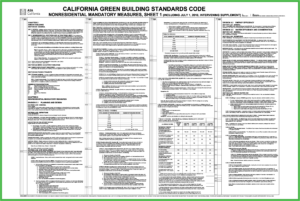
AIA Checklist
The above are three of the many possible CalGreen Checklists that are used within the state. AS you can see the content and format vary widely. It is critical to have a CalGreen specialist supporting your project to ensure the right checklist, and the right requirements, are included in your permit submittal.
Those with experience in the industry know that plan reviewers rarely look at the CalGreen compliance documentation at the permit stage. However, the onsite building inspector will carefully review the CalGreen requirements at the end of construction. Disconnects at this stage can delay occupancy permits and create significant change orders.
When the Green Building Standards Code was first issued in 2008 it was a shock to the industry. This was due to it’s unconventional format, the lack of formal guidance on interpretations and its use of so called “voluntary measures” (hint, they’re not voluntary!).
The code was a unicorn among the state codes which left design professionals, plan reviewers and contractors thoroughly confused. There was not another code in the state like it. Exactly, how it was to be complied with was not clear.
Local building departments did not have the training, staff or budgets to deal with this code outlier. They quickly latched on to a simple way of minimizing their review and compliance workload. The solution was for each jurisdiction to create their own, simplified, version of the CalGreen checklist. They could cherry pick items from the code that were easy to understand and review and put them in their local CalGreen Checklist. And boy, this idea caught on fast!
Today, almost every single urban area has its own version of the CalGreen Checklist. Sacramento, Los Angeles, San Francisco, Napa County, Riverside, Palm Springs, Vallejo and dozens more, all have their own version of a CalGreen Checklist. In addition, every one of these varies greatly from the one published by the California Building Standards Commission.
The wide-spread use of these abbreviated checklists has certainly lightened the review load by local building departments. On the other hand it has left architects, developers and contractors with endless variations in code compliance from one jurisdiction to another. It has also created confusion as to the code enforcement.
Avoid the Pitfalls
The simplest way to avoid permit delays and change orders during construction is to engage a CalGreen Code specialist for your project. While bringing them on board at the beginning of the project is ideal, at the very least we would recommend hiring them to put together the CalGreen Checklist for your project.
We are the CalGreen Code specialist!
We respond quickly to emails and voicemails. We will put together a proposal for you right away and can typically start on your project within a couple of days.
Email or call us now to see how we can help you.
Gary Welch
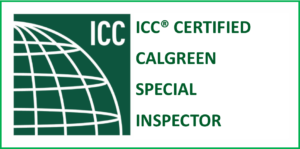
Email: gary@calgreenenergyservices.com
Phone: 707-328-5299


Gary Welch has over 35 years experience in the field of sustainable building design. He is the CEO of CalGreen Energy Services. Gary is an ICC Certified CalGreen Special Inspector and Plans Examiner.

